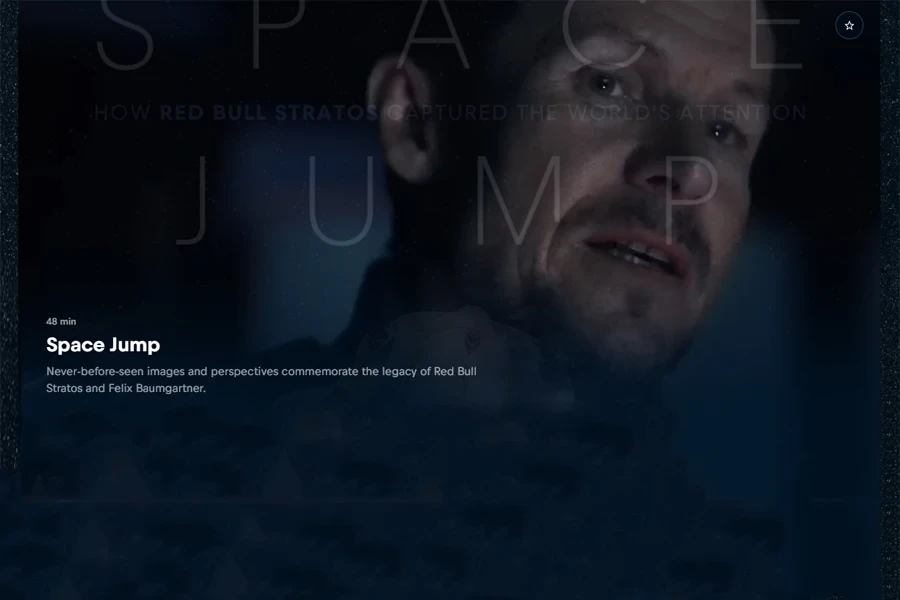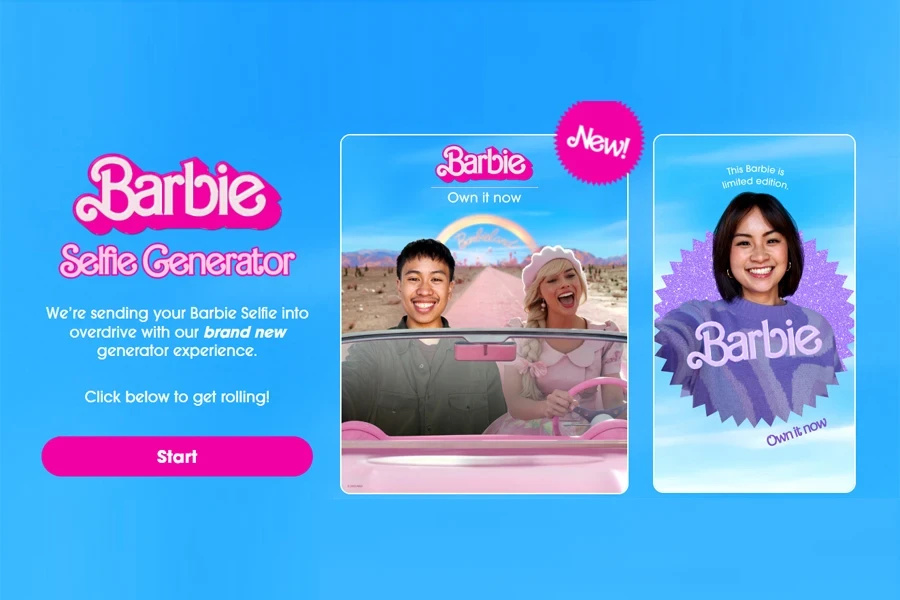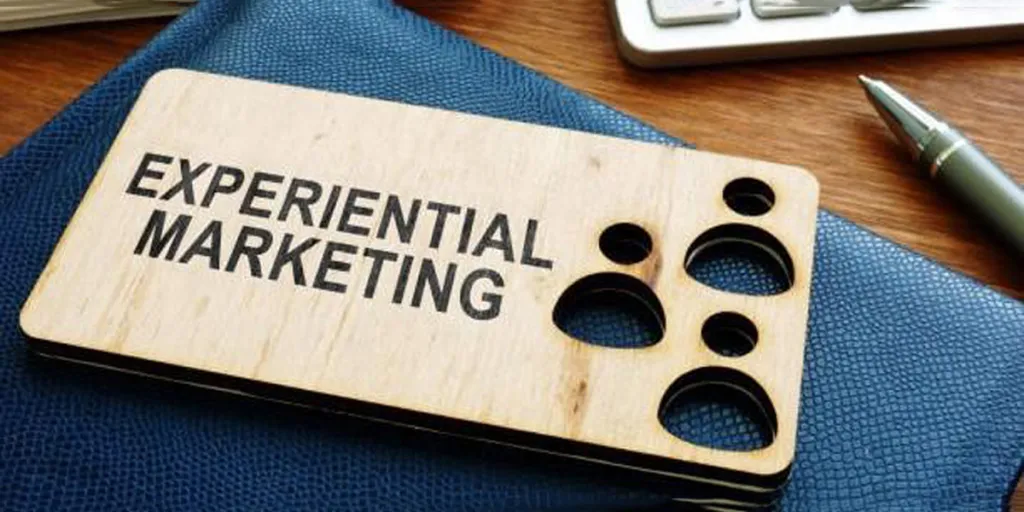The marketing of the good old days saw billboards, TV commercials, magazine spreads, and newspaper advertisements as surefire ways to reach new and potential customers. But digital technology quickly put out that fire and revolutionized how businesses advertise with sponsored search results, email marketing, display ads, and targeted ads.
Although connecting with new audiences is the most straightforward it has been in years; modern consumers may feel overwhelmed with the millions of marketing messages bombarding them. With more distractions filling the digital space than ever, experiential marketing has stepped in to save the day.
This strategy allows brands to create genuine relationships with community relationships and effectively engage their customers. Keep reading to learn more about the benefits of experiential marketing and how to make the perfect experience with it.
Table of Contents
What is the goal of experiential marketing?
How is experiential marketing different from traditional advertising
How can retailers benefit from experiential marketing?
The 3 stages to focus on when planning experiential marketing campaigns
5 tips to set up a highly engaging experiential marketing campaign
Examples of successful experiential marketing campaigns
Final words
What is the goal of experiential marketing?

Experiential or engagement marketing is a more physical way to increase brand awareness and promote products. Instead of digital ads, brands can engage consumers (new and old) by inviting them to memorable brand experiences. Some examples are virtual experiences, pop-up shops, live events, and brand activations.
The objective is to use direct interaction to create a tough, emotional connection between brands and their target audiences—though it involves personal participation. Although experiential marketing campaigns work as standalone projects, top brands often use them to complement a larger traditional advertising strategy.
How is experiential marketing different from traditional advertising
Experiential marketing varies from its traditional cousin, especially in objectives and performance measurement. While traditional display ads focus on direct KPIs (e.g., conversion rates and CPC), experiential marketing builds long-term relationships and boosts brand awareness.
So, instead of tracking the direct KPIs popular with traditional ads, brands use indirect metrics (like foot traffic and participant feedback) to measure the success of their experiential campaigns.
How can retailers benefit from experiential marketing?
With today’s customers’ craving experiences, experiential marketing offers a solution by bringing brands to life. Businesses can create highly impactful experiential campaigns if they do things by the book and enjoy many benefits. Here are some of them:
Businesses can interact with customers directly
The best experiential campaigns directly engage customers, creating a much-needed connection between them and the brand. These interactions (through in-person or virtual events) provide helpful insights into consumers’ challenges, preferences, and product usage. Plus, when brands build genuine customer relations, they can easily adjust their marketing strategies to better satisfy their audience.
Experiential marketing gives consumers more memorable experiences
Today’s consumers enjoy sharing delightful and surprising experiences, especially those who are very active on social media. When experiential marketing efforts give them that experience, it’ll make the rounds on social media—meaning businesses get free word-of-mouth marketing. In truth, happy consumers sharing their experiences can turn into UGC (user-generated content) for businesses, allowing them to attract even more potential customers at no extra costs.
Businesses using experiential marketing feel different
E-commerce markets have a lot of competition, so small businesses may not stand out easily. However, the good news is that they can use experiential marketing to offer something different and transform unique experiences into customer loyalty.
In addition, these branded experiences are a great way to boost brand awareness and attract new customers. And when it’s time to make that purchase, customers will most likely go for the brand that offers a standout experience.
The 3 stages to focus on when planning experiential marketing campaigns
Stage 1: before the campaign

Businesses must prepare properly before starting an experiential campaign. For starters, all team members must understand what they should be doing during the campaign. Plus, the most important elements shouldn’t pass without a test to prevent unnecessary accidents. Here are other things to implement before an experiential campaign:
- Set clear marketing goals and define metrics for performance measurement
- Ensure the brand’s messaging is consistent with activities
- Inform the team about campaign goals to ensure they act as effective ambassadors
- Review the environment, ensuring everything complies with laws
- Align plans properly, considering holidays and predictable trends to enhance marketing
- Make the experiential marketing campaign a part of the overall omnichannel strategy, allowing the unique experience to continue across devices and locations
- Consider creative inputs and technology, keeping them simple for participants
- Ensure the experiential strategy revolves around the customers. Don’t just do it if it appeals to the business; check if it resonates with customers, too.
Businesses must thoroughly prepare with this checklist if they want to create a safe and enjoyable experiential marketing campaign. The more time they spend refining their plans, the better their chances of executing them with a bang.
Stage 2: during the campaign

This stage is where all the action happens. It’s where brands will employ experts to help turn their plans into realistic experiences and ensure that they’re memorable. Here’s what they must do for a successful execution:
- Manage performance, logistics, and execution. Implement checks and balances, ensuring the team works seamlessly to keep things smooth. Don’t forget to provide refreshments, backup, and support for employees running the campaign’s activities.
- The customer’s safety, engagement, and experience are the top priority—don’t forget it and make the experience about the business. Avoid centering the campaign around products and publicity stunts. Instead, introduce consumers to the business world with a positive and fun experience.
- The team should be part of the product, so brands must train them well. They must ensure every member has the relevant information, a cheerful smile, and is ready to perform. Remember that each team member should know their tasks and should be able to complete them without issue.
- As mentioned earlier, businesses’ actions must be consistent with their brand’s messaging. All direct marketing, advertising, and customer experiences should display the same message, value, and language.
- Don’t ignore the smaller detailers. Even the tiniest aspects like tone or friendly follow-up messages can excite customers even more. It’s a great way to make them feel valued beyond their money, making every interaction a good chance to earn their trust.
- While the campaign is in full swing, collect the necessary data to help with performance analysis and marketing. How? Businesses can approach participants for feedback and monitor metrics to see if the efforts were worth it.
- An experiential campaign won’t be complete if customers don’t share their experiences. Hence, brands must encourage social sharing. Social media’s massive impact is hard to ignore, so ask participants to share photos and tag the brand. However, brands must also take pictures and videos themselves to update their socials.
- Remember to have fun. When the team has a good experience, customers will, too. A cheerful atmosphere leaves customers happier and more engaged. If more customers associate positive feelings with the brands, then businesses have a successful campaign under their belts.
Stage 3: After the campaign

An experiential campaign doesn’t have to end after the event. Brands can add them to other marketing activities after measuring the campaign’s success. They can also communicate with participants to show ongoing support and keep the positive vibe going. Here are some tips to follow:
- Study and compare the collected data with marketing goals. It’ll help show what worked and what failed. Then, brands can pour more effort into areas that generate the highest ROI to enhance future campaigns.
- Create follow-up campaigns to keep up with participants through social media and other channels. Remember to use photos, videos, and tags from these participants.
- Promote activities that foster even more social engagement. It could be price draws to push participants to share their experiences—anything that creates more shareable moments, requires feedback, encourages interactions, and fulfills promises will work here.
- Experiences may leave lasting impressions, but brands must work on strengthening them. Provide additional value to customers to keep the connection strong after the campaign.
- Share the results and insights with stakeholders and reveal how things will be moving forward.
5 tips to set up a highly engaging experiential marketing campaign
Set goals first!
Experiential strategies rarely result in quick sales. Instead, they raise brand awareness, drive social engagement, introduce new products to customers through samples, and boost abstract assets like brand loyalty. Hence, businesses must set these results as their campaign goals.
Although objectives/goals vary, the most important part of any experiential strategy is making brands more physical and direct. So, after the event, consumers must feel closer to the brand and understand what it represents. It’s the only way for businesses to create a meaningful experience.
Create a budget for the campaign
The most eye-catching experiential marketing often comes from popular companies with high budgets. But all businesses don’t have to break the bank to create impactful experiences. In truth, brands can do big things with a small budget. What matters is the creative processes and pinpointing exactly what makes the strategy successful.
Encourage consumers to participate
Since experiential marketing targets memorable experiences, passive spectators are a big no-no. Instead, businesses should curate interactive events that encourage people to participate. It can be contests, scavenger hunts, virtual experiences, and taste tests—all perfect for UGC. These interactive activities are the best way to transform spectators into community members.
Work with a compatible agency partner if the budget allows
Businesses with a bit more budget can write an RFP (request for proposal) when working with marketing agencies. This document indicates when brands want to hire service providers for events. Then, they can send the RFP to their preferred agency, which will respond with how they will help fulfill the request.
However, a good RFP response doesn’t mean the perfect fit—brands must always check if the agency matches their goals and if they are a prime candidate for long-term relationships.
Examples of successful experiential marketing campaigns
Red Bull Stratos: extreme livestream

Red Bull gained worldwide attention and headlines by sponsoring Felix Baumgartner’s record-breaking skydive from the edge of space. The company created a live stream for consumers to directly participate, ensuring users get the exciting and memorable experience firsthand.
Uber ice cream
In 2012, Uber launched the annual ice cream campaign, delivering free ice cream to customers via the app. Partnering with local ice cream shops, Uber encourages recipients to share their experiences on social media using #UberIceCream. This delightful marketing idea subverts the brand’s typical operations.
Barbie Selfie Generator: online AI personalization

The Barbie franchise created a website that allows users to upload selfies and translate them into one of the iconic characters in the world. This way, consumers can immerse themselves in Barbie’s world, especially when the site places them next to the titular character. This fun and engaging campaign uses AI to create a memorable experience for Barbie fans.
Final words
When brands need better ways to connect beyond social media and regular ads, they can turn to experiential marketing. These campaigns take the brand to the consumers, giving them a first-hand experience of what they can gain from its products or services.
Although the benefits are huge, businesses must also plan carefully to stop accidents or unwanted results during their campaigns. Follow the tips and strategies discussed in this article to ensure everything about the experiential campaign works out perfectly.




